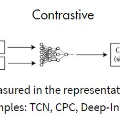Deep learning models are modern tools for spatio-temporal graph (STG) forecasting. Despite their effectiveness, they require large-scale datasets to achieve better performance and are vulnerable to noise perturbation. To alleviate these limitations, an intuitive idea is to use the popular data augmentation and contrastive learning techniques. However, existing graph contrastive learning methods cannot be directly applied to STG forecasting due to three reasons. First, we empirically discover that the forecasting task is unable to benefit from the pretrained representations derived from contrastive learning. Second, data augmentations that are used for defeating noise are less explored for STG data. Third, the semantic similarity of samples has been overlooked. In this paper, we propose a Spatio-Temporal Graph Contrastive Learning framework (STGCL) to tackle these issues. Specifically, we improve the performance by integrating the forecasting loss with an auxiliary contrastive loss rather than using a pretrained paradigm. We elaborate on four types of data augmentations, which disturb data in terms of graph structure, time domain, and frequency domain. We also extend the classic contrastive loss through a rule-based strategy that filters out the most semantically similar negatives. Our framework is evaluated across three real-world datasets and four state-of-the-art models. The consistent improvements demonstrate that STGCL can be used as an off-the-shelf plug-in for existing deep models.
翻译:深层学习模型是时空图(STG)预测的现代工具。 尽管它们有效, 它们需要大型数据集才能取得更好的性能, 并且容易受到噪音扰动的影响。 为了减轻这些限制, 一个直观的想法是使用流行的数据增强和对比式学习技术。 但是, 现有的图形对比学习方法不能直接应用于STG的预测, 有三个原因。 首先, 我们从经验上发现, 预测任务无法从对比性学习得出的预先培训演示中受益。 其次, 用于击败噪音的数据增强量对于STG 数据来说, 探索得较少。 第三, 样本的语义相似性被忽略了。 在本文中, 我们提出一个Spatio- 时空图对比性学习框架(STGCL)来解决这些问题。 具体地说, 我们通过将预测损失与辅助性对比性损失相结合, 而不是使用预先培训模式。 我们详细介绍了四种类型的数据增强性数据增加量, 从图表结构、 时间域和频域中干扰数据。 我们还将典型的对比性损失扩展为典型的典型的典型的典型, 通过一个基于规则的四级的模型, 展示了我们目前使用的数据升级的模型。


